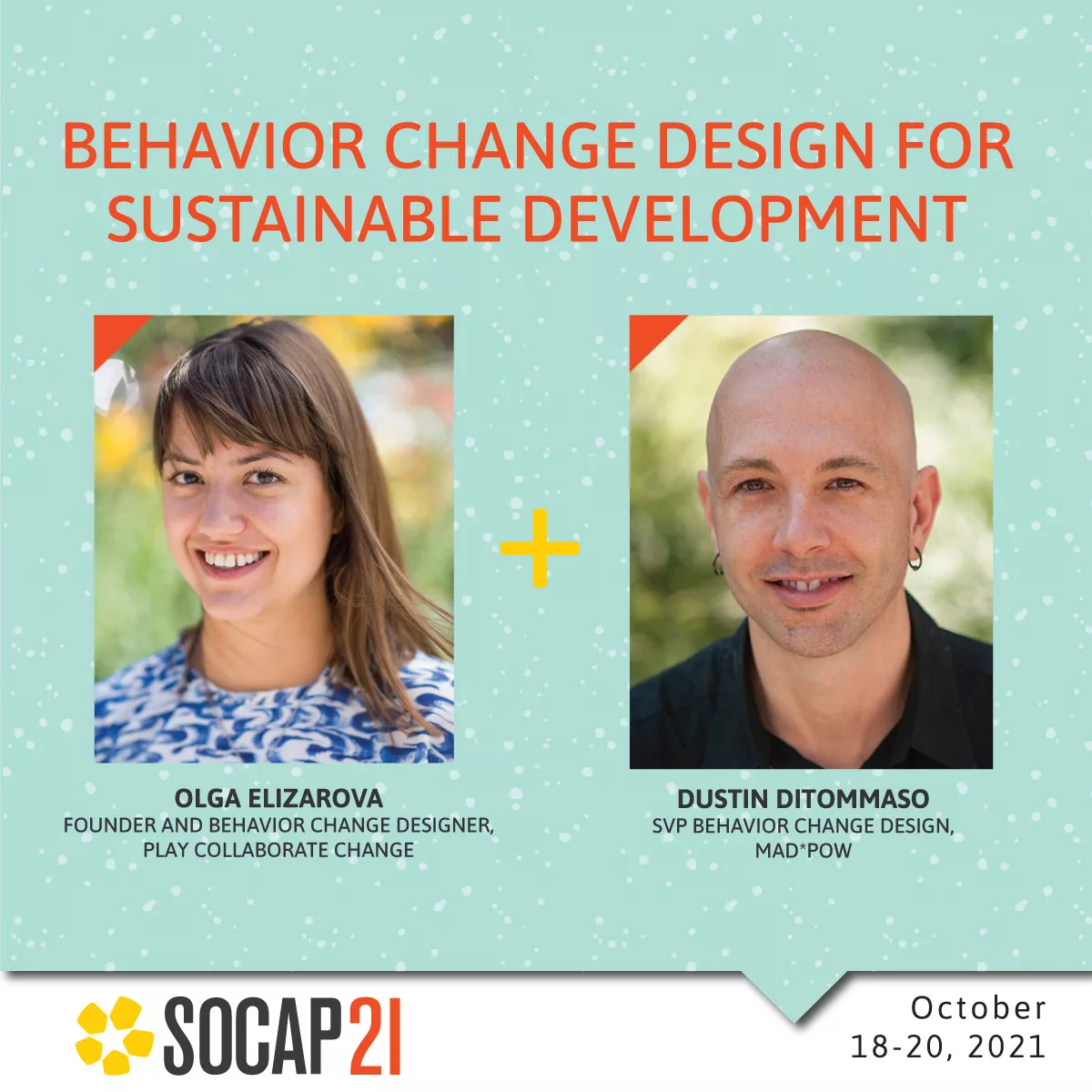Addressing the world’s largest threats through pursuit of the U.N. Sustainable Development Goals (SDGs) will require people, organizations, and governments to undergo behavior change — a complex long-term challenge. But incorporating an understanding of human behavior and defining the barriers to behavioral challenges can help people develop products and services that advance progress on the SDGs.
This interactive workshop at SOCAP21, Behavior Change Design for Sustainable Development, incorporated exercises to help participants learn by doing and apply those skills later in their work toward the SDGs. Through slides and questions, they practiced practical behavior-change design skills that can be applied to improve the impact of their programs, services, or fundraising initiatives.
In his role as SVP Behavior Change Design at Mad*Pow, Dustin DiTommaso helps clients in industries such as health care and financial services create effective interventions and methodologies that incorporate behavioral science, data, and technology in addressing the SDGs.
“When we think about the SDGs and what we’re trying to achieve … human behavior is central to all of the outcomes that we care about,” he said. “There is a human behavior — individual, groups, populations — at the core of both sides of this equation: those who contribute to the problems, and behaviors that are central to the solutions.”
For example, DiTommaso said, quality of education — SDG 4 — depends upon the behavior of key players such as students, teachers, and the organization. To optimize education, he said, it’s critical to determine whose behavior is central and necessary.
DiTommaso outlined a four-step methodology — diagnose, prescribe, execute, evaluate — for behavior change design that practitioners and policymakers can use. “When we understand and frame the goals we have in behavioral terms — who needs to do what — we can design and implement and target those behaviors with techniques that are best suited and most likely to address the factors needed to change those behaviors,” he said.
Olga Elizarova, Founder and Behavior Change Designer at Play Collaborate Change, incorporates behavioral science in her work with impact startups, nonprofits, and impact investors. Many of these clients are pursuing projects to advance the SDGs through investments and programs in emerging markets addressing issues such as ensuring access to clean drinking water and sanitation.
There are more than 90 techniques that can be used to help people overcome barriers and change their behavior to help address the SDGs, she said. These include helping people increase their knowledge, promoting or enabling the behavior, providing motivation to change, and substituting another behavior.
“These aren’t ready-to-implement solutions; they are the things you are building from and translating using knowledge of communities, social, cultural, and environmental context,” Elizarova said.
The exercises during the interactive session included nine behavior change techniques selected because they are versatile and applicable to multiple behaviors and outcomes that align with the SDGs, she said. Each exercise grew increasingly complex as the session advanced.
Watch Behavior Change Design for Sustainable Development
Speakers:
Olga Elizarova, Founder and Behavior Change Designer at Play Collaborate Change
Dustin DiTommaso, SVP Behavior Change Design at Mad*Pow





